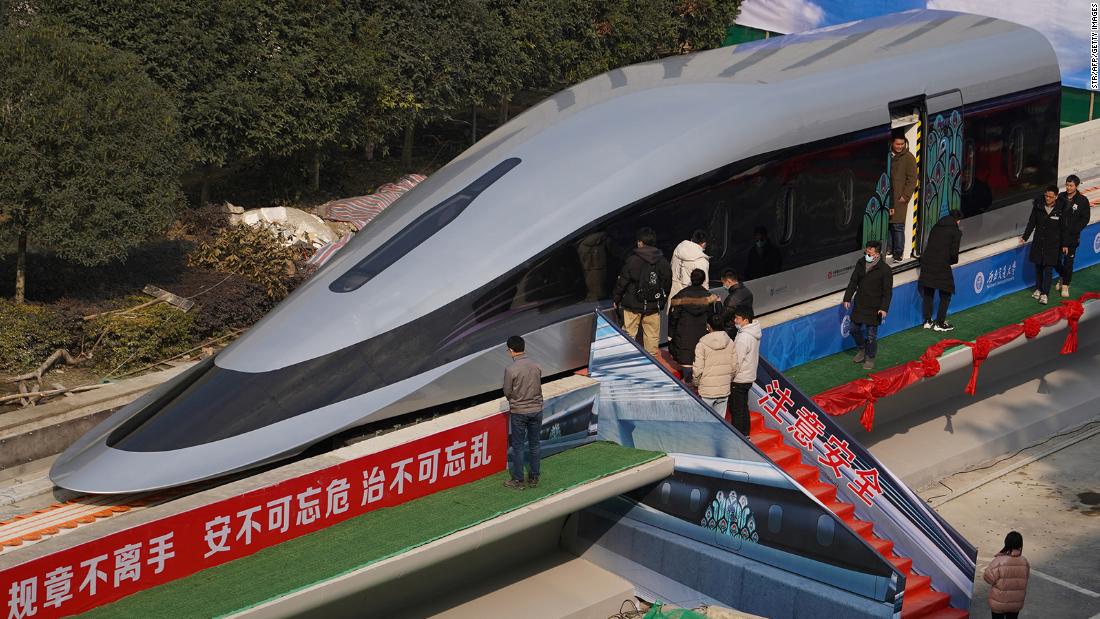The train runs on superconducting high temperature energy (HTS) which makes it look like the train is floating along the magnetized tracks.
Professor He Chuan (vice president of Southwest Jiaotong University, who worked on the prototype) told reporters that the train could be “operational” in 3 to 10 years.
He added: “Sichuan has rich rare earth resources, which is very beneficial for building permanent magnet trails, thereby promoting the faster development of experiments.”

A possible interior for the new Maglev train.
Liu Kun / Xinhua / Sipa USA
China is home to the largest high-speed rail network in the world, stretching over 37,000 kilometers, and the fastest train in commercial operation – the Shanghai maglev.
The country’s first high-speed Maglev train started operating in 2003. Running at a maximum speed of 431 km / h, the train links Shanghai’s Pudong airport and Longyang road on the east side of Shanghai.
China is eager to make further infrastructure improvements ahead of the 2022 Winter Olympics in Beijing.
Last year, China opened a new 174-kilometer high-speed rail line connecting Beijing to the host city of the 2022 Winter Olympics, Zhangjiakou, reducing travel time between two from three hours to 47 minutes.
CNN’s Shanshan Wang contributed reporting.
